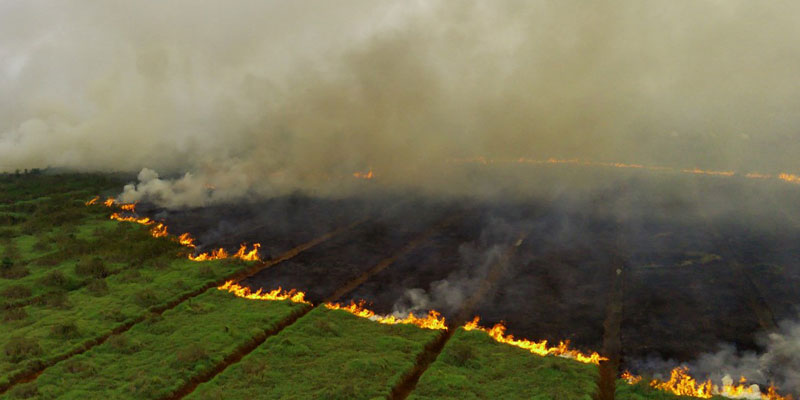- World
- Nov 30
Explainer - What are peatlands?
• The UN Environment Programme (UNEP) released the Global Peatland Hotspot Atlas which showed peatlands degraded in 177 out of 193 UN Member States.
• The ‘Global Peatland Hotspot Atlas: The State of the World’s Peatlands in Maps’ released during the UN Climate Change Conference in Baku (COP29), have updated hotspot maps of global peatland distribution, highlighting the threats they face and the opportunities for peatland restoration and conservation.
• The atlas provides evidence for the need to enhance protection and restoration of peatlands, along with investments in research and monitoring.
What are peatlands?
• Peatlands are a type of wetland which occur in almost every country and are known to cover at least 3 per cent of global land surface.
• However, they store nearly 550 billion tonnes of carbon, twice as much as all the world’s forests.
• The term ‘peatland’ refers to the peat soil and the wetland habitats growing on the surface.
• In peatlands, year-round water-logged conditions slow plant decomposition to such an extent that dead plants accumulate to form peat. This stores the carbon the plants absorbed from the atmosphere within peat soils, providing a net-cooling effect and helping to mitigate the climate crisis.
• Peatlands contain up to one third of the world’s soil carbon. This is twice the amount of carbon as found in the entirety of Earth’s forest biomass. Keeping this carbon locked away is absolutely critical to achieving global climate goals.
• Locally, peatlands help regulate and purify water, support local livelihoods, and reduce the risks of fires, drought, and floods. The report finds that peatlands provide habitats for over 1,000 vulnerable‚ endangered and critically endangered plant and animal species.
• Peatlands are one of the greatest allies and potentially one of the quickest wins in the fight against climate change.
• Peatland ecosystems are under threat by deforestation, they are drained for agriculture, mined for fuel, degraded by pollution, damaged by overgrazing, harmed by fire, destroyed for infrastructure development and exposed to a range of other threats.
• When peatlands are disturbed, drained and degraded, they contribute disproportionately to greenhouse gas (GHG) emissions.
• This results mainly from a lack of awareness of the benefits of peatlands and includes actions such as: drainage, conversion for agriculture, burning, and mining for fuel.
• In some regions, up to 80 per cent of peatlands have been damaged.
• Peat, essentially, is an early stage of coal – and like coal – is highly flammable. The dried peatland quickly goes up in flames and then can smoulder underground for months until the rainy season starts.
• Smallholder farmers and concession-holding companies use fire to cheaply clear debris to prepare land for planting.
• Emissions from drained peatlands are estimated at 1.9 gigatonnes of CO2 annually. This is equivalent to 5 per cent of global anthropogenic greenhouse gas emissions, a disproportionate amount considering damaged peatlands cover just 0.3 per cent of landmass.
• Peatlands are significant to global efforts to combat climate change and achieve other Sustainable Development Goals. Their protection and restoration are vital in the transition to a zero-carbon society.
• Draining peatlands reduces the quality of drinking water as water becomes polluted with organic carbon and pollutants historically absorbed within peat.
Manorama Yearbook app is now available on Google Play Store and iOS App Store


